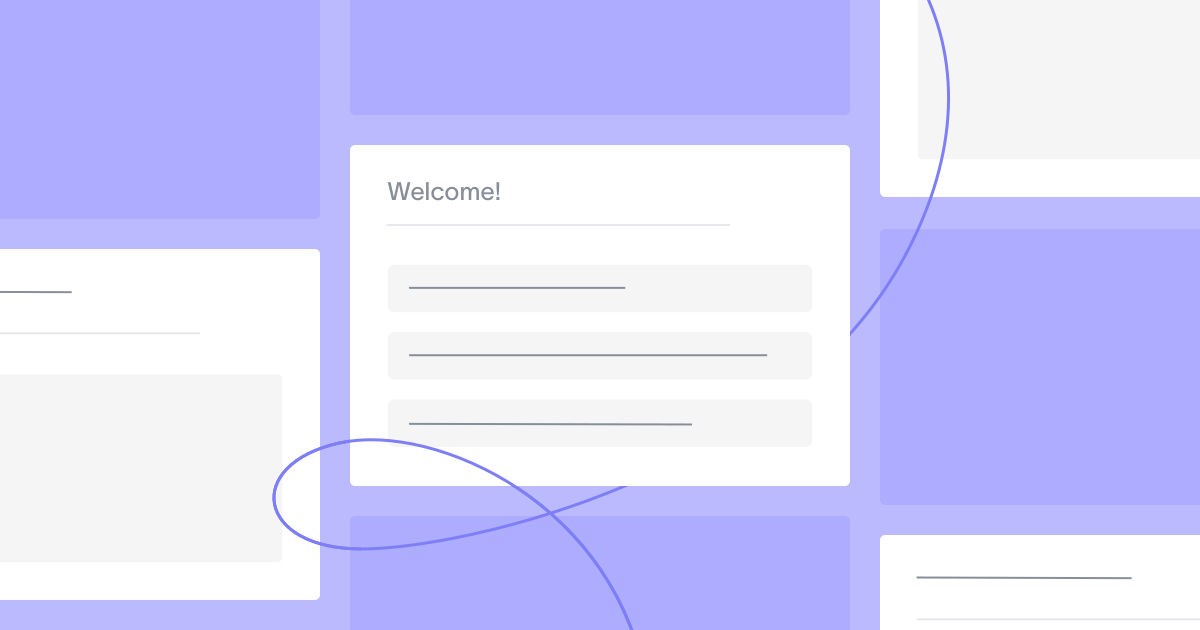As a survey creator, you need to know what your customers or employees are thinking – and you want insights that you can take action on. But, what would happen if you asked certain questions that lead survey respondents to answer in a favorable way – also known as leading questions – without even knowing it?
The answer? Asking leading questions can do far more harm than good for your survey program.
In fact, asking them in your feedback surveys might not only return unhelpful responses, but could also produce misleading or untrue results. Results that, should you take action on, could lead to some detrimental business outcomes.
As such, we’ve taken a closer look at what leading questions are, a few examples of different types, the difference between leading and loaded questions, and share why you should avoid leading questions altogether to achieve improved versions of your surveys.
What are leading questions?
Leading questions are survey questions that encourage or guide the respondent towards a desired answer. They are often framed in a particular way to elicit responses that confirm preconceived notions, and are favorable to the surveyor – even though this may ultimately sway or tamper with the survey data.
Sometimes, leading questions are used intentionally to persuade the respondent to answer in a certain way, e.g., choosing between two products or services, instead of having the option to not choose something at all.
Other times, leading questions are included in surveys by accident. But, by making small tweaks to the framework of your questions, you can ask effective survey questions without compromising the trust of your intended audience (or the integrity of your data).
Types of leading questions with examples
Now that we’ve covered what leading questions are, let’s look at some types – and examples – so they’re easier to identify (and avoid) when you’re crafting future surveys.
1. Assumption-based leading questions
Assumption-based leading questions assume something about the respondents. These types of questions are often seen in surveys meant to evaluate perceptions of a product, service, or experience – whether through customer feedback surveys, website evaluation surveys, employee experience surveys, or other survey types.
Assumptions, however, should be avoided in surveys as they lead respondents to answer in preconceived ways only, and leave no room for them to express their true thoughts or opinions.
Here are a couple of examples:
- How excellent is your new purchase? (Here, it’s assumed the respondent enjoys their purchase.)
- How exciting was our online event for you? (Here, it’s assumed the respondent considered the event exciting.)
TIP: To avoid biased questions, make sure to include a range of appropriate options – including neutral or “other” options – for respondents to select from.
2. Coercive leading questions
Meanwhile, a coercive question forces respondents to answer in only one way, typically in the affirmative.
Here are a couple of examples:
- You’re planning to remain working for this company, correct?
- Our customer service team responded adequately to your needs, didn’t they?
3. Direct-implication leading questions
A direct-implication leading question sets the respondent up for future behavior (even if they weren’t yet thinking that way).
Here are a couple of examples:
- If you enjoy working at this company, will you recommend it to your family or friends?
- Your purchase means a lot to us. Will you recommend it to others?
4. Leading question with interconnected statements
This final type of leading question confuses the respondent by making a statement and then asking a follow-up question.
Here are a couple of examples:
- Most of your colleagues want to return to the office. Do you?
- Our customers rave about this product. Can’t you see why?
Much like a double-barreled question – another type of question to avoid in your surveys – interconnected statements reduce the clarity of your question, and in turn, muddy the responses you’ll get.
What’s the difference between leading and loaded questions?
You’ll oftentimes hear the term “loaded questions” alongside “leading questions” when discovering questions to avoid, so it’s important to understand the difference.
While leading questions guide respondents to a specific answer, loaded questions can be considered trick questions because they assume something about the respondent within the question itself. Oftentimes, in a feedback survey, the response (whether the respondent agrees or disagrees) will be favorable to the company.
Here are a couple of examples of loaded questions:
- Where do you enjoy shopping? (Here, it’s assumed the respondent enjoys shopping, even if they do not.)
- How does this company make you feel like you belong? (Here, it’s assumed the respondent feels a sense of belonging, whereas they may not.)
Why you should avoid leading questions in your surveys
If you want to maintain the integrity of your survey responses, leading questions – and loaded questions, for that matter – should be avoided at all costs. Here are a few reasons why:
1. You might not learn anything new
If you’re surveying your customers, you want to know what they’re thinking about your website, product, service, or something else related to your business. These insights can help you determine whether you’re reaching the right audience, attract and retain customers, and improve the way you do business.
But if you’re asking leading questions in your customer satisfaction surveys, you might not learn anything new about your business. Why? Because you’re guiding customers to answer questions in a predetermined way, providing you with the same responses you might have written yourself!
And even if you had the best intentions, and were unaware the questions you were asking were leading, you’ll, unfortunately, have wasted your – and your customers’ – time with a survey that returns no new or actionable insights.
2. You might gather false information
What might be worse than not learning anything new from customer feedback is gleaning false feedback. This false information could lead you to misunderstand your customer or employee experience, as well as how you’re product or service is perceived in the market, and lead to business decisions that hurt your organization instead of improving it.
REMINDER: This is why including neutral response options in your surveys is crucial!
3. You might not be able to use the data
By nature, leading questions lead survey respondents to intended – and often favorable – results, evade neutrality, and may result in prompting respondents to provide answers that are unreliable. They also introduce unwanted survey bias in your data, and could render your research unusable.
Creating surveys that return insightful, actionable data should be an easy lift, but sometimes, unwanted bias caused by the way questions are asked can happen. By thoughtfully avoiding leading questions, and asking questions to evade biases in general, you’ll gather more useful data that will help you drive better experiences for your customers and employees – and better outcomes for your business.
Start gathering feedback to understand your customers and employees with Delighted’s free online survey maker.







